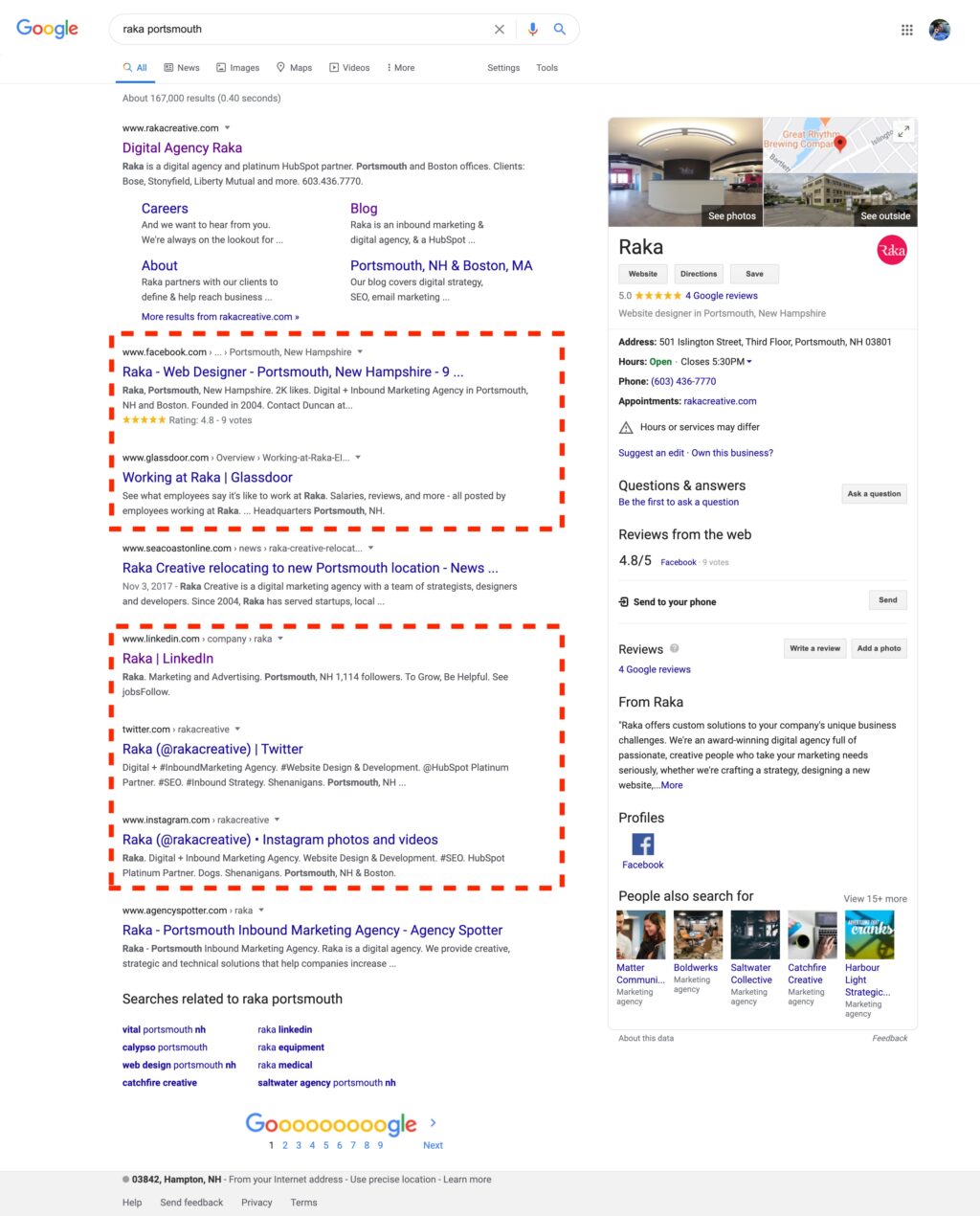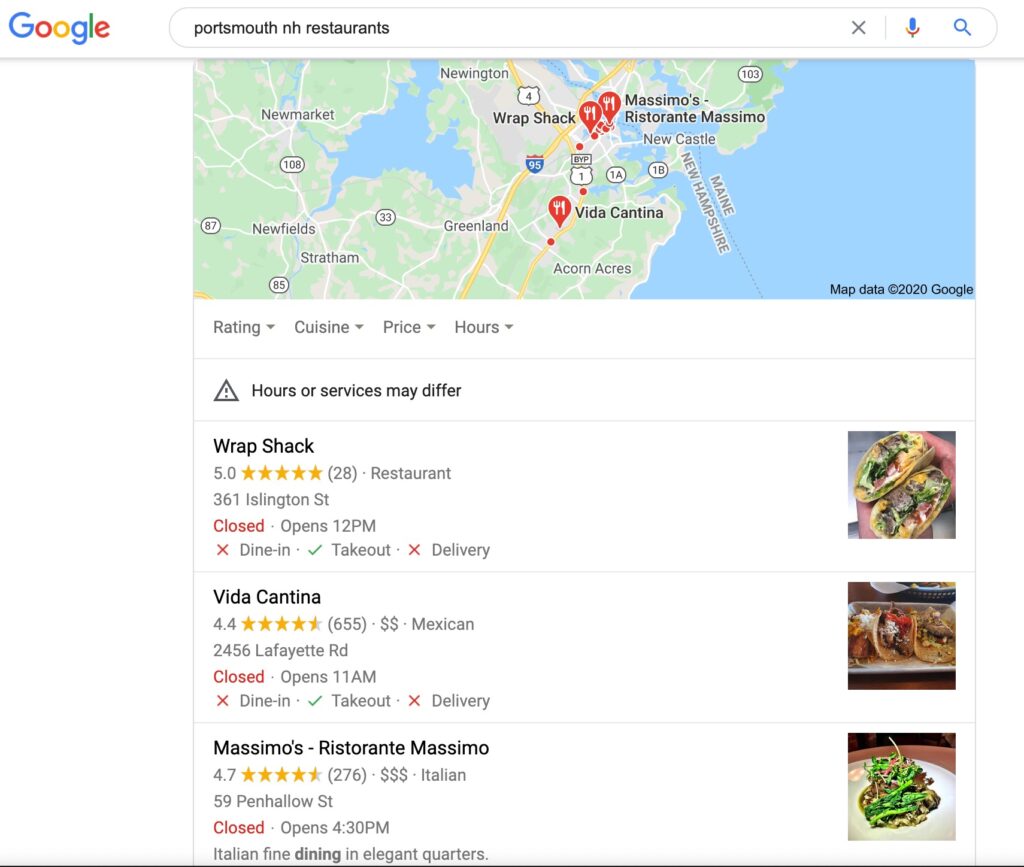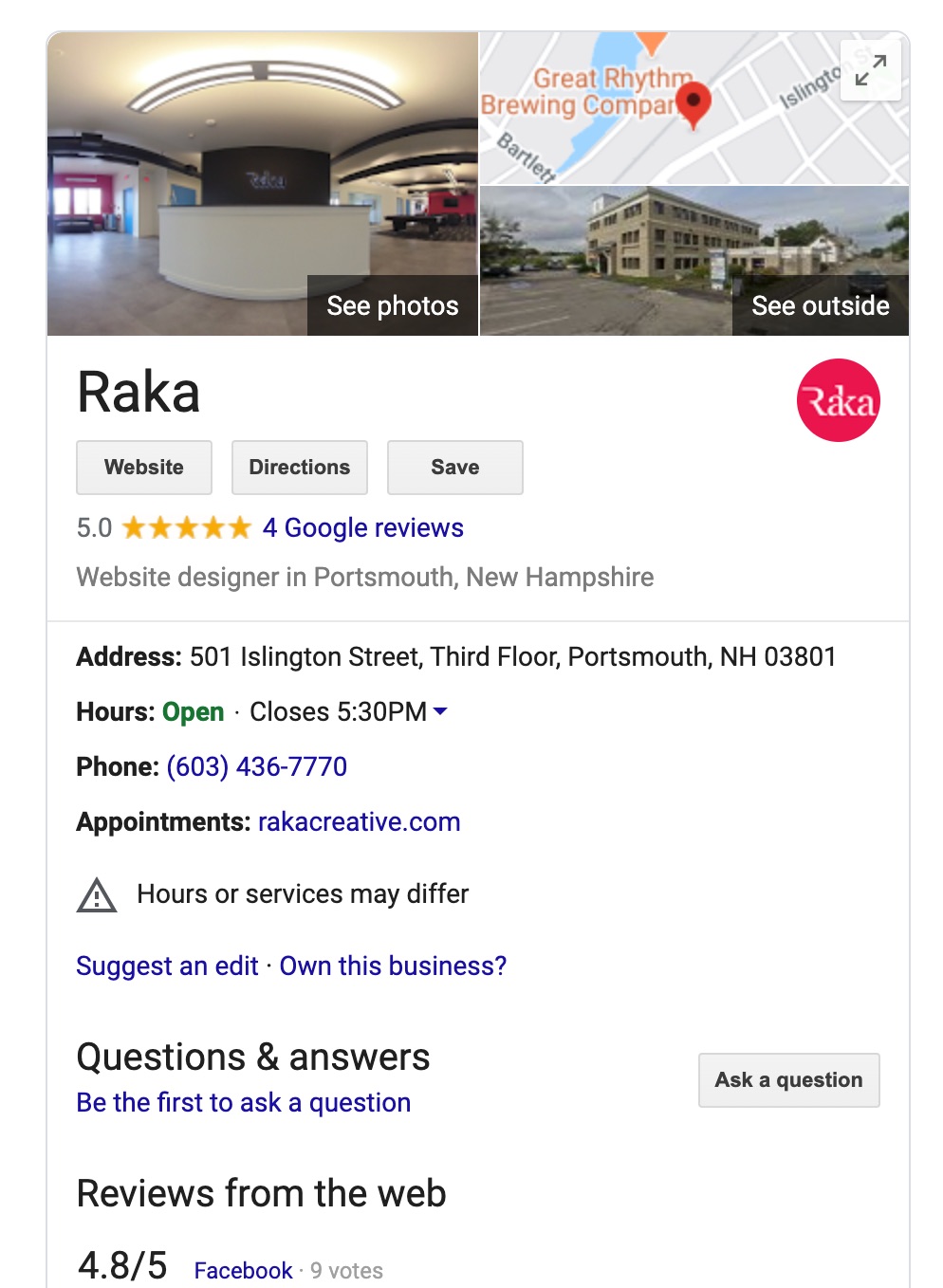If you work in marketing, it’s likely you’ve heard someone talking about wanting to “win the Search Engine Results Page (SERP)” in a company meeting or strategy session. The concept seems simple enough: make it easier for your audience to find your brand by owning every placement on a search page for one of your core brand, product, or service terms. But owning a SERP is a lot of work. A SERP, on average, has three paid search results followed by 10 organic results and supplemented by the knowledge graph (aka the Knowledge Panel or Knowledge Box), and may also (or alternately) have image, video or product listings.
If it seems like a daunting task, it is. You won’t be able to win all three paid search spots, but it’s possible that there may only be one or two paid results featured on the SERP, which should make it easier to get where you want to be. On the other hand, winning 10 consecutive organic listings for a competitive keyword is nearly impossible, but it doesn’t mean that it isn’t worth the effort.
If you’re willing to put in the effort, here’s what you should do to win the SERP.
First, pick the right keywords
Here’s an opportunity to be brutally honest with yourself: you’re not going to win the SERP for any keywords that aren’t immensely valuable and incredibly relevant to your brand. This includes your brand name, core product names, and—unless you coined a term that your industry happens to love like “inbound marketing”—that’s about it. Don’t set yourself up for failure by trying to win the SERP for terms that have high search volume but aren’t directly relevant to your brand.
Finding the right keywords for your business can take some time and trial and error, but the right mix of high-value keywords can be immensely beneficial to your SERP rankings.
Focus on these areas to win the organic SERP
Owned Media
Content
This is where it all starts. If your site content isn’t well-optimized, you don’t stand a chance of winning the SERP. We’re talking service or product pages that are well-written and speak strongly to your product or service’s relevant attributes, and contain the service or product name in as many of the following as possible:
- Title tags
- Meta descriptions
- Header (H1, H2…H6) tags
- Media file names
- Alt tags
- Schema
But optimizing metadata alone won’t get you to the top spot in SERPs (you do want your website to rank highest among all of your appearances in the SERP, right?). You also need a lot of links pointing to your content, which is where you want to focus on things like:
- Social posts
- Social shares
- Backlinking
Keep in mind that well-optimized website content doesn’t begin and end with your homepage, service/product pages and contact page. It also includes blog content, which should be updated much more regularly and used to support pillar pages. Blog content is typically also a better source of social shares and backlinks, which underscores their importance even further.
Finally, it isn’t enough to have well-optimized content that’s linked to a ton. Your content also needs to be compelling enough to keep people interested. This means that the content should be highly accessible, should boast a strong internal linking structure, and have an optimized user experience. And of course, this will be proven by:
- Low bounce rates
- Low exit percentages
- High times on site
- High pages per visit
And while I know we just said you should focus on winning the SERP on brand and product terms, we also don’t recommend optimizing every bit of website content for your brand name or product lines. Remember, SEO is as much art as it is science, so these sorts of things should be approached delicately.
Multimedia
Images, graphics, and videos should not just be an afterthought when it comes to your SEO strategies and efforts to win the SERP. When you are creating these graphics, focus on a few things:
- Ensure the file names are search-optimized. This primarily means including relevant keywords in the file names.
- Make sure that you’re using optimized versions of images. This means using JPGs as opposed to PNGs, and it also means compressing those images. JPGs load much more quickly and efficiently than PNGs, which will improve help your page load speed and create a stronger user experience.
- While hosting and serving videos yourself may have some small SEO benefits, the downside—page load lag and scalability on smaller browsers among them—is far greater. You’re better off hosting the video on YouTube and embedding it on your site, not only because embedding handles almost all of the concerns around video performance, but also because your videos are more likely to rank near the top of the SERP if they’re served by YouTube, rather than your own site. If you must host the video yourself, the simplest approach is to use mp4, which will give you excellent compatibility, along with good file size. Providing both mp4 and webm will give excellent compatibility along with a future-forward and efficient format.
- When writing alt tags, use natural language and try to limit the tag to four or five words. Remember that the purpose of alt tags is to describe the image for users who are unable to see it, so a picture of a white tennis shoe should have an alt tag like “white men’s adidas tennis shoe”, not “best tennis shoe for men”. If you’re selling a service like data management, the alt tag on your image should be something like “data management services for purchasing departments”, not “[Brand name] data management subscriptions starting at $99”.
Social channels
Social media provides a one-two punch when trying to win the SERP: first, it gives you an opportunity to earn those valuable inbound links and social shares to help boost your website’s profile in Google’s eyes. Second, it provides your brand with myriad opportunities to rank on the first page. Facebook, Instagram, LinkedIn, Twitter, and Pinterest alone can win you half of the SERP!

Never underestimate the value of sharing your content on social media. Inbound social links are generally considered very high-quality and with every piece of content you share, you increase your brand reach and your opportunities for social post interaction and sharing.
There is a limit to the value of social channels, so you’ll want to avoid carpet-bombing all social channels with content—if you’re selling a SaaS solution for HR teams, you probably don’t want to post that on Pinterest, just like your restaurant food supply company doesn’t want to spin its wheels on Snapchat.
Google channels and “near me” searches
If you’re trying to win the SERP, you can’t afford to overlook the channels that Google often includes in search pages, mostly Google Maps and Google My Business. As “near me” or local searches continue to increase in volume, Google has emphasized the local pack in search results. This creates a huge opportunity for brands to capitalize on users searching for products or services near them. You can optimize your site for local search using a combination of tactics, but the most beneficial ones may be including your address in your site footer and implementing local markup (schema) to make it easier for search engines to identify your location.

The most important thing you can do to win with local search is to optimize your Google My Business profile. Recently, Google has created more opportunities for brands to develop their Google My Business profiles, which suggests that this channel will become an even more integral part of SERPs moving forward.
Make sure that your Google My Business profile includes location images, hours, contact information, accessibility information, and your website. Of course, if you’re a retailer, you may also want to include featured products, or if you’re a restaurant, your menu. Finally, because online reviews impact 93% of purchases, make sure that you’re encouraging customers to provide reviews, and respond to any reviews you do receive.
Website
At the end of the day, the name of the search game is getting people to your website, but Google won’t be your ally if your site performs poorly.
You may want to use Google PageSpeed Insights to make sure that your pages load quickly and use Search Console to ensure that all links on your site are operating correctly. You’ll also want to use Google Analytics to monitor engagement–bounce rate, time on site, exit percentage–on key pages. If you notice that engagement or conversion rates are low, you may opt to add an on-page chat feature to help improve dwell rates and engage more directly with your audience.
You may also choose to enlist a consultant or agency to audit your website’s user experience and accessibility to ensure that when people get to your site, they have a good experience and stick around long enough to find what they need.
Earned Media
Customer review sites (Yelp, etc.)
Let’s face it: you can’t win a SERP with your website and social channels alone. Yelp, Google and other review sites provide your business with an incredible opportunity not only to win the SERP but also to boost your profile. In fact, review sites alone could win you a SERP if you paid enough attention to them. Yelp, Google, the BBB, YellowPages, FourSquare, and so many other industry-specific sites (TripAdvisor, HomeAdvisor, OpenTable, Edmunds, Zillow, Angie’s List, Care.com, etc.) can help improve your business’s authority and increase your reach.
Making review sites work for you is a two-part challenge. You’ll need to provide a level of service strong enough to make your audience want to leave reviews. This in itself can go two ways: according to Review Tracker, if your customers have a strong negative experience, they’ll be 21% more likely to write a negative review, than users who have a strong positive experience, which is the other part of the challenge. How do you compel your customers who have a good experience to share that experience with the world? User-generated content contests, raffles, or giveaways are some examples, but the best way to do it is to make your audience so happy that they can’t wait to rave about you.
Public Relations
Another great way to earn some high-quality placements in SERPs is to engage in public relations campaigns that can help you earn media coverage from sites that Google already prefers, like Consumer Reports, the Wall Street Journal, Forbes, or industry media outlets.
Winning the paid SERP
The only way to win the paid part of the SERP is, of course, to engage in search advertising. Three to four search ads typically show up above organic listings on each page, although in certain situations, a single search ad may serve beneath organic results.
While engaging in search advertising is the only way to have an opportunity to win the paid SERP, there are a number of things you can do to improve the relevance and appeal of your search ads once you start advertising.
Start by focusing on your ad extensions. Sitelinks, Callout extensions, and Structured Snippets can go a long way to improving the relevance of your ads, and they’re also a great way to tell a more complete brand story. Call and message extensions allow your mobile audience a quick way to connect with you, which can be very important in the moment. And of course, review and location extensions help your audience get a better understanding of who your brand is, how you operate, and whether or not you’re worth doing business with.
It’s also important that your paid landing pages be well-optimized for versions of the core term you’re looking to win the SERP for. If they’re well-optimized enough, you may even choose to serve them as part of a dynamic ad campaign so that you can minimize setup time and maximize the performance and efficiency of your ads. If you choose to do a standard search campaign, make sure that you’re bidding on variants of the core term, and use your match types judiciously (meaning don’t abuse broad match or rely too heavily on exact match). Broad match modified and phrase match keywords are your friends when trying to win the paid SERP.
Winning the Knowledge Box
For many marketers, the Knowledge Box is still uncharted territory. Some brands are able to win a Knowledge Box placement by happenstance, but for most, it involves a long-term commitment to content, schema, and listening.

Schema
The Knowledge Box is the most competitive part of the SERP to win, because there’s only one, and it only shows up on certain searches for certain users. One of the most well-documented ways to earn a Knowledge Box placement is by using schema markup that can indicate to search engines what the content on your page is about. If you’re not comfortable using schema, you may want to check with your development team so they can point you in the right direction.
FAQs
Of course, schema without strong content is meaningless, so don’t just try to add a bunch of markup to a thin page and expect to win. You need to have content that directly addresses your audience’s questions or needs, and it needs to be well-organized and thorough, but should also be as direct as possible to encourage Google to select your content to answer user questions.
One of the best ways to accomplish this is by creating an FAQ page that contains the questions your brand hears most frequently, and then answers them right away. This is where listening comes in. It’s likely that your database contains a handful of questions that your audience or prospects are asking when they fill out contact forms, but monitoring social media or forum sites is another great way to get into the mind of your consumer so you can answer their questions before they even search for them.
At the end of the day, winning an entire SERP is going to be tough–there’s a lot of competition out there and media that covers your industry, and it’s likely that even the most comprehensive SERP-takeover strategy will have a couple holes in it. Even if it doesn’t win you the whole SERP, taking the steps above will make it much easier to increase awareness of and affinity for your brand in the short term, and to drive more engagement and sales in the future.





